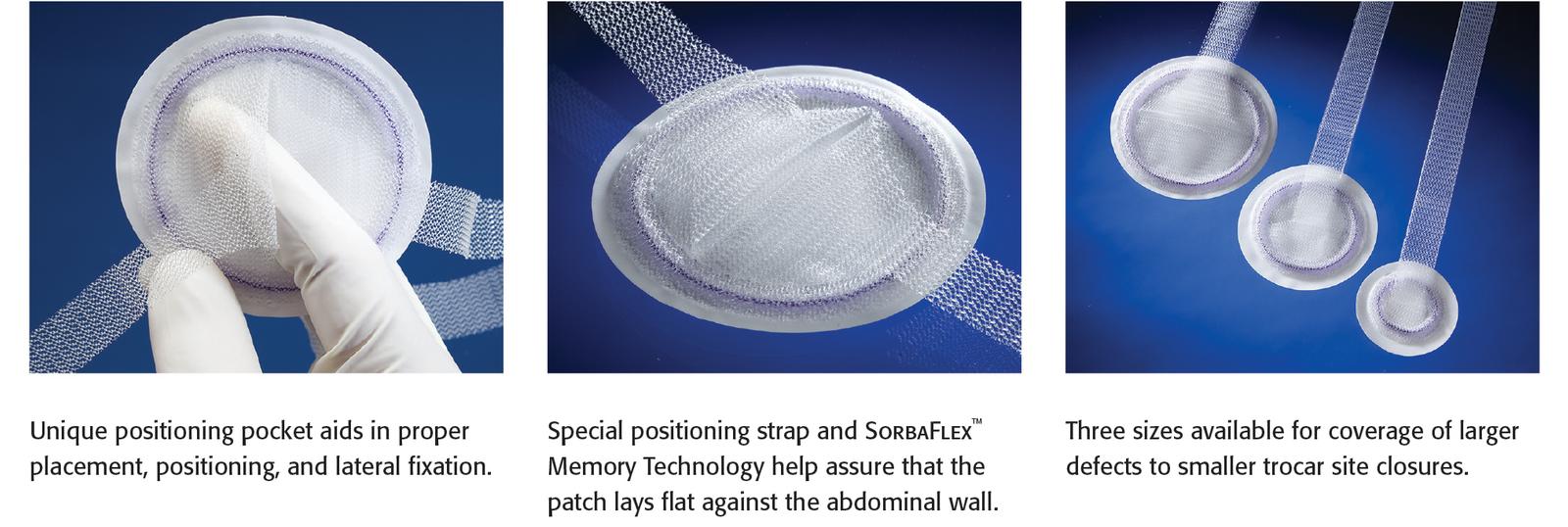Contact Support
A clinically proven umbilical hernia repair solution designed for ventral, incisional, umbilical and epigastric hernia repair as well as trocar site closure.
The Ventralex™ Hernia Patch is a self-expanding polypropylene and ePTFE patch that allows for an intraabdominal, tension-free repair. This technique is designed to eliminate the lateral dissection typically required for preperitoneal placement, which may help minimize post-op pain. Deep placement of the prosthetic also allows for a strong repair and less chance of recurrence.
Technique and Placement

Positioning

Materials and Clinical Data
Clinically supported technique since 2002 with peer-reviewed published clinical studies.*
The Ventralex™ Hernia Patch is also available with an absorbable barrier featuring Sepra® Technology – Ventralex™ ST.

Please note, not all products, services or features of products and services may be available in your local area. Please check with your local BD representative.
Indications
The Bard® Ventralex™ Hernia Patch is indicated for use in the reinforcement of soft tissue deficiencies in the repair of ventral, incisional and umbilical hernias.
Contraindications
Warnings
Precautions
Adverse Reactions
Possible complications include, but are not limited to, seroma, adhesions, hematoma, pain, inflammation, extrusion, erosion, migration, fistula formation, infection, allergic reaction, and recurrence of the hernia or soft tissue defect. If the SorbaFlex™ PDO Monofilament is cut or damaged during insertion or fixation, additional complications may include bowel or skin perforation and infection.
Please consult package insert for more detailed safety information and instructions for use.